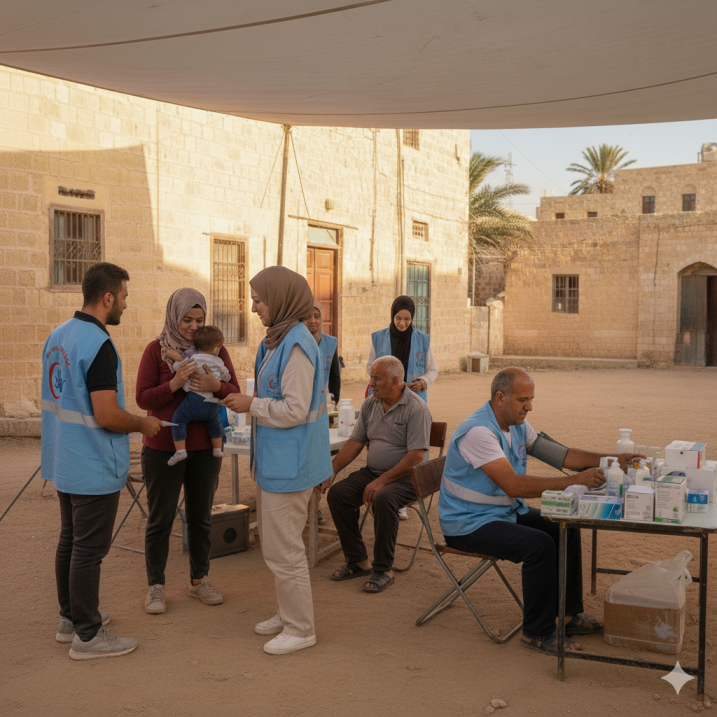
The Third Sector
“Social need will grow in two areas. They will grow, first, in what has traditionally been considered a charity. The need will grow equally- perhaps even faster- in the second area of social services, services that do not dispense charity but attempt to make a difference in the community and to change people” (Drucker, 2001, p.329-330) Peter Drucker, a social ecologist and management guru, argued in his plea for the importance of an autonomous social sector that has to take the form of nonprofit community organizations (1). He goes one step further to call this third sector, unique from government agencies and private businesses, “America’s Civil Society” (2).
Now, let’s analyze the last statement a bit more. One of the effects of industrialization and the resulting modernization is the geographic and occupational movements of individuals, where social ties are weakened and the individual is increasingly isolated. The traditional communal ties of family, tribe, neighbourhood, and religion are more or less severed in a post-capitalist urbanized society. Egyptian society is no exception, and it might have gone through this social uprooting earlier than other societies in the region by virtue of exposure to colonial powers and modernization efforts by Mohamed Ali’s dynasty (3). In the modern nation state, this isolated individual feels helpless. Paraphrasing Drucker (2001, p.331), the individuals cannot take responsibility, cannot take action to make a difference. There can be nationalism, but not citizenship. Without citizenship, there cannot be responsible commitment, nor can there be the sense of satisfaction and pride that comes from making a difference (1).


Can nonprofit work help us recreate citizenship and, with it, restore our sense of responsibility and confidence in our ability to address our ills and have an impact? Can it help us relearn what collective work is?
It absolutely can. One notable example is the nonprofit sector in the US, with more than 1.2 million nonprofit organizations in the US, employing more than 12 million paid workers, offering volunteer opportunities to 49% of Americans (4), and contributing more than 1.4 trillion dollars to the economy. . However, the critical impact is not economic but rather the changed lives. The Salvation Army, for example, provided probation services in Florida for people released after their first prison term, rehabilitating 80% of the twenty-five thousand released yearly (1). In 2024 alone, Feeding America, through a vast network of nearly 2 million annual volunteers, provided almost 6 billion meals while rescuing 4 billion pounds of food from going to waste (5). The American Heart Association is another example of a non-profit with a tremendous global impact. Since a very humble beginning by six cardiologists in 1924, fast forward one hundred years, the organization has funded research that established cardiopulmonary resuscitation (CPR) practices, helped invent the external defibrillator, the implantable pacemaker, artificial heart valves, and microsurgery (6). Today, the organization is garnering support from 35 million volunteers worldwide. While it is impossible to estimate the number of lives saved as a result of their work, it’s safe to say it’s in the millions.
To feed the hungry, shelter the homeless, and cure the ill are noble and honorable efforts. However, another dimension of nonprofit work might be of equal if not greater importance. And that is building the leaders of tomorrow. Drucker argued that the product of the nonprofit organization is a changed human being (2). Changing a human through alleviating the state of hunger, ignorance, or illness on the one hand. On the other hand, changing a human through joining a nonprofit mission and consequently transforming a national to a citizen, and a citizen to a leader. The nonprofit can be an ideal training ground to foster leadership in its volunteers and staff through hands-on responsibility, the purpose-driven nature of the work, the need to navigate real-world challenges, and by witnessing the impact of their efforts, instilling hope and confidence.
As hunger strikes hard globally, as homelessness, addiction, and lack of opportunity haunt our societies, and as lack of access to quality healthcare takes millions of lives every single year, good citizens of the world are fighting back. Let’s join the fight.
References:
- Drucker, P. F. (2001). The essential Drucker: The best sixty years of Peter Drucker’s essential writings on management. HarperBusiness.
- Drucker, P. F. (1990). Managing the nonprofit organization: Principles and practices. HarperCollins.
- Mitchell, T. (1988). Colonising Egypt. University of California Press.
- Independent Sector. (2024, December 16). Health of the U.S. nonprofit sector: Annual review. https://independentsector.org/resource/health-of-the-u-s-nonprofit-sector/
- Feeding America. (2024, December). 2024 Annual Report. https://www.feedingamerica.org/sites/default/files/2024-12/FA_24AnnRep_d5_ONLINE.pdf
- American Heart Association. (n.d.). History of the American Heart Association. American Heart Association. Retrieved June 21, 2025, from https://www.heart.org/en/about-us/history-of-the-american-heart-association




